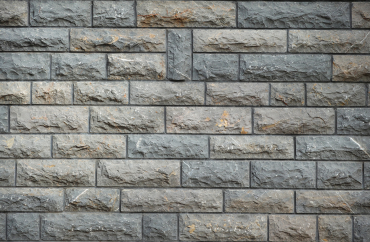Understanding Throating in Stone Masonry: A Complete Guide
Introduction
Throating in stone masonry is a critical construction technique that plays a significant role in protecting structures from water damage. This simple yet effective method involves carving grooves or channels beneath stone projections, such as cornices, sills, and coping stones, to prevent water from running along the surface and causing deterioration.
In this guide, Uniquebuildss will explore what throating in stone masonry is its various techniques, and the key benefits that make it an essential practice in traditional and modern construction.
What is Throating in Stone Masonry?
Throating refers to the process of creating a small, continuous groove or recess underneath a stone projection to direct rainwater away from the surface of a building. It is commonly used in stone sills, cornices, and lintels to prevent water from trickling back and damaging the masonry joints.
The primary function of throating is to ensure proper water drainage and enhance the longevity of masonry structures by reducing the risk of water seepage and dampness.
Techniques of Throating in Stone Masonry
There are several techniques used to incorporate throating in stone masonry. The choice depends on the architectural design, material, and environmental factors.
1. Continuous Groove Method
- A linear groove is cut along the underside of the stone element.
- The depth and width of the groove vary based on the stone thickness and structure.
- This method is commonly used in window sills, copings, and cornices to channel water effectively.
2. Bead and Drip Edge Throating
- Involves adding a rounded bead or drip edge to the groove.
- Enhances water flow control and prevents water from clinging to the stone surface.
- Common in heritage buildings and traditional masonry designs.
3. Stepped or Multiple Groove Throating
- Consists of multiple grooves or steps to increase water resistance.
- Particularly effective in areas with high rainfall or for structures exposed to moisture for extended periods.
- Used in large stone projections, temple architecture, and monuments.
4. Reverse Slope Throating
- The underside of the stone is sloped in the opposite direction of the facade.
- Ensures that water does not accumulate or seep into joints.
- Common in modern stone masonry designs.
Benefits of Throating in Stone Masonry
Throating provides several advantages that make it an essential feature in stone masonry construction:
1. Prevents Water Seepage & Dampness
- The primary function of throating is to redirect rainwater away from the structure.
- Reduces water penetration and prevents the development of moisture-related issues like dampness and efflorescence.
2. Enhances Durability of the Structure
- Helps protect the stone and mortar joints from erosion caused by prolonged water exposure.
- Extends the lifespan of stone projections, facades, and architectural elements.
3. Improves Aesthetic Appeal
- Prevents water stains and streak marks on stone surfaces.
- Maintains the visual integrity of historical and modern structures.
4. Reduces Maintenance Costs
- By minimizing water damage, maintenance efforts and repair costs are significantly reduced.
- Essential for heritage buildings and monuments, where restoration can be costly.
5. Provides Better Water Management
- Ensures efficient rainwater drainage, especially in buildings with intricate architectural details.
- Reduces mould growth and wall deterioration due to water exposure.
Applications of Throating in Stone Masonry
Throating is widely used in various architectural elements to enhance both functionality and aesthetics:
- Stone Window Sills – Prevents water from running down the walls.
- Cornices & Copings – Protects the upper portions of walls from water damage.
- Lintels & Thresholds – Enhances water drainage above doorways and entryways.
- Balcony & Parapet Walls – Ensures water does not accumulate or seep into the structure.
- Temple & Monument Architecture – Used extensively in traditional stone masonry to protect sculptures and inscriptions.
Throating in stone masonry is a simple yet powerful technique that enhances the durability and longevity of buildings by preventing water seepage, improving drainage, and reducing maintenance costs. Whether used in heritage structures or modern constructions, throating plays a crucial role in ensuring that stone elements remain intact for generations.
By understanding and implementing the right throating techniques, builders and architects can create structures that stand the test of time while maintaining both functionality and aesthetic appeal.
